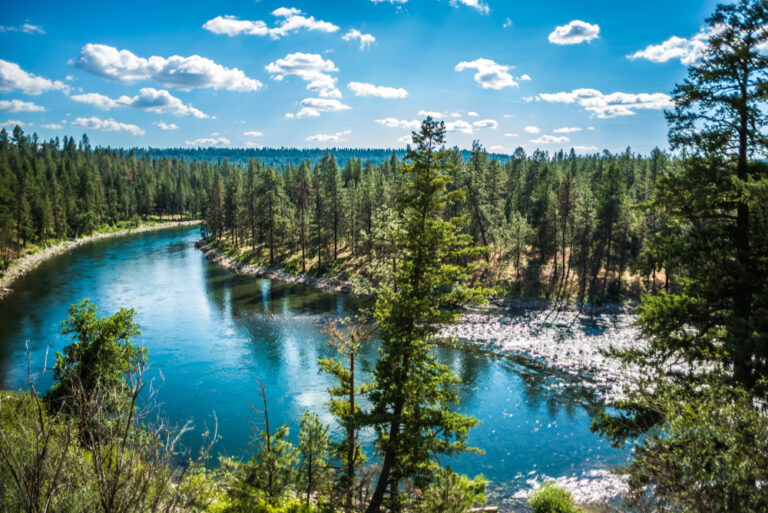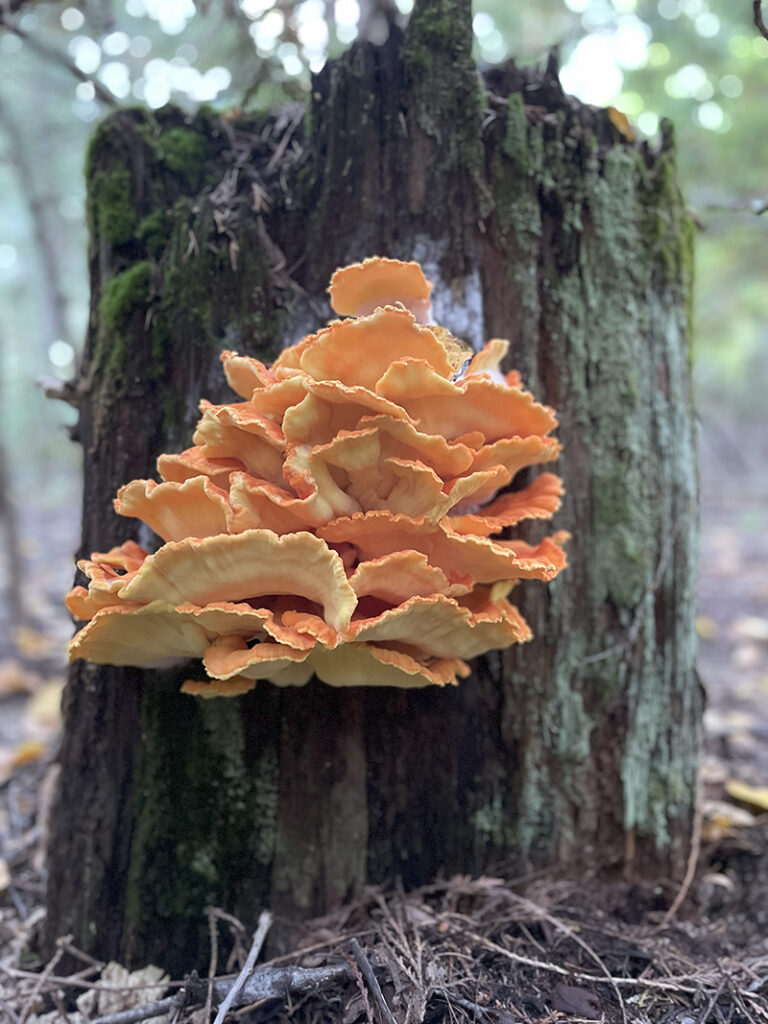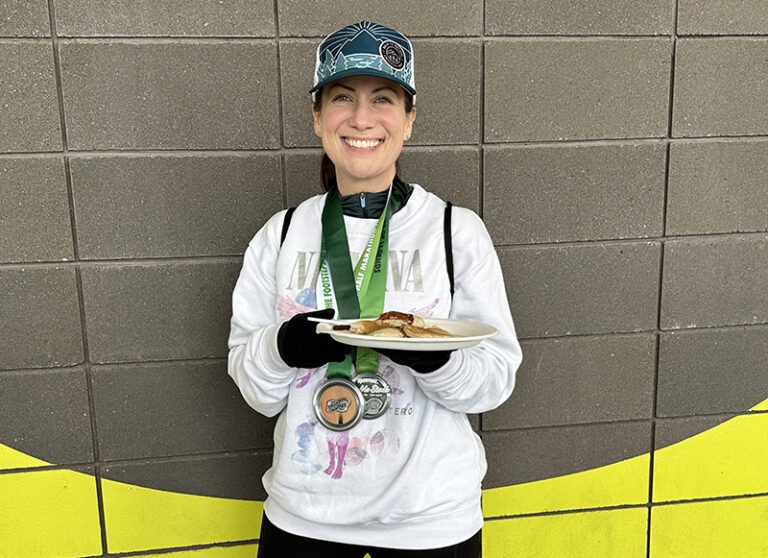Outdoor experiences make life worth living, and our area is rich with lakes and mountains to enjoy. While the challenges or the motivations vary, there is no shortage of inspirational landscapes to appreciate. Whether you’re a biker, hiker or paddler, you probably bring along your camera to document your outings.
Outdoor photography connects people in many ways—the viewer to the subject, the landscape to the accomplishment, the vision to the artist, the moment to be shared again and again. In the Inland Northwest, outdoor photography can be taken for granted since the opportunities are practically unmatched in the rest of the country. From the gigantic Idaho lakes to the massive Cascade volcanoes, there’s a grounded argument that local photographers can photograph dominating alpine mountains, lush rainforest trails, glowing sandy beaches, rolling Palouse farmland, and sweet desert sagebrush all in the same day!
Today’s cameras only amplify the potential for great photos, and continuing jumps in image software boost outdoor photography even further. Like every digital device, modern digital cameras are becoming affordable enough so that many families have a couple decent cameras (not to mention the cameras on many cell phones). It’s becoming increasingly popular for a family to go outside solely for an outdoor photo tour.
Sometimes a family can take a trip to photograph an event, such as the Walla Walla hot air balloon stampede, or they can simply go to photograph a place or a feature such as Palouse Falls. Sometimes the goal might be a day hike up Steamboat Rock at Banks Lake, but along the
way they might photograph an old barn or some beautiful wildlife.
Thanks to the variety and abundance of unspoiled scenery, there’s a chance that the same outing might allow sister to photograph brilliant wildflowers, brother can photograph a majestic elk, father photographs a misty waterfall, and mother photographs a stunning sunset. Even if you’re timid about the outdoors, or you have limited mobility, or you’ve never considered yourself skilled with a camera, outdoor photography in the Inland Northwest truly offers something for everyone.
Through several informal interviews with some of the area’s best outdoor photographers, Out There Monthly compiled a list of some of the premier spots that meet three primary criteria. First, these are all easy—easy to find, easy access, easy approach. These photo spots are all kid-friendly locations. Second, they are beautiful settings with lots of obvious composition options that do not require expensive lenses or extra gear. All of the places are relatively photogenic year round so you can practice taking better and better images, improve your skills, and possibly create seasonal family outings. Third, these places are so unique to the Inland Northwest that even if you’ve visited them ten times already, you will still find something impressive to share or photograph on your eleventh visit.
FINCH ARBORETUM
No other location proves to be the most exotic yet simplest to photograph. The John A. Finch Arboretum is located in southwest Spokane on 65 acres of wooded hills. It’s a botanical collection of trees and plants along the Garden Springs Creek and labeled for field study. Unless you have forever avoided Interstate 90 West to the airport, then you have certainly driven right past this beautiful city park.
Local photographer Jed Conklin says, “We live in the Evergreen state. This park is a real treasure and the best chance to photograph something other than pine trees.”
Conklin also highlights two chief ingredients for good photos—specifically, good sunrise/sunset lighting, and the photographer’s creed: the Rule of Thirds.
The Rule of Thirds is imperative because spacing the primary subject into one third of your picture creates depth, adds a background, and gives each photo a unique scale. The photographer’s role is to create a photograph that captures attention. The Rule of Thirds does that by using basic human behavior. A person’s eyes don’t focus on the center of a photograph; it scans the edges. This is always important in composition, but especially important whenever photographing trees and friends because vegetation and people need a sense of scale in order for the viewer to appreciate the concept of the photo.
Runner-up Location (similar photography opportunity): Manito Park, Spokane’s South Hill.
STEPTOE BUTTE
SITUATED HALFWAY BETWEEN Spokane and Pullman, seemingly in the middle of never-ending farmland, Steptoe Butte offers some of the best photography opportunities possible, especially at sunset. The perch from this State Park provides a vibrant opportunity to fill your camera with fields of gold and green, along with the many colorful wildflowers that blanket the area. Steptoe Butte State Park is a 150-acre, 3,612-foot-tall natural monument composed of quartzite, and the State Park website proudly declares views up to 200 miles in every direction.
The road to the summit actually circles the Butte a couple of times in corkscrew fashion. This circular journey only adds to the panoramas and provides multiple views of the rich farmland at various elevations. Once on the summit, the great relief from the Butte ensures there is always a shady side during the golden sunrise and sunset hours. This translates into longer sessions of soft light, and it really rewards any photographer who remembered their tripod.
Strangely enough, while forest fire or grass-burning smoke often hinders the distance of the view, they can also contribute to some of the most stunning sunsets. Admittedly, it isn’t safe up there during a storm, but if you can catch the weather leaving or coming, there’s a strong chance you can create a brilliant photo.
Runner-up Location (similar photography opportunity): Kamiak Butte, approx. 11 miles north of Pullman.
PALOUSE FALLS
PALOUSE FALLS IS A Washington State icon. After the Columbia River, Puget Sound and Mount Rainier, this waterfall easily stands among the top ten most photographed natural features in all of Washington. Rightly so. The waterfall drops 180+ feet. Located approximately 25 miles due south from Ritzville, the Palouse River spills into a giant circular gorge just a few miles before joining the Snake River.
In the spring, the sunlight passing through the massive spray casts unbelievable rainbows. In the winter, the entire waterfall gorge can transform into a gigantic collection of ice sculptures. Even during low water, the waterfall holds your attention. With or without a camera, you should go see it.
“At Palouse Falls, specifically, I have found that I get the best results shooting at sunrise,” says photographer Lacey LaDuke. “The sun is positioned right, the colors are rich, and the lighting gives great depth. Waiting too long and allowing the sun to get high in the sky washes out the colors and makes the images come out flat and boring.”
Referring to common mistakes, LaDuke says, “My first trip to Palouse Falls was in the spring of 2007, and I jumped out of the car and eagerly started snapping away and didn’t get anything that I would use today, but I was stoked at the time. The machine gun method seems to be what most amateur photographers go with. Over time I have learned to slow down, survey the scene, look at the lighting and composition and then shoot.”
Runner-up Location: Snoqualmie Falls, west side of the Cascades near North Bend.
TURNBULL NATIONAL WILDLIFE REFUGE
TURNBULL NATIONAL WILDLIFE REFUGE encompasses approximately 16,000 acres of marshes and channeled scablands about six miles south of Cheney. The combination of basalt outcrops, canyons and undulating meadows provide a year-round diverse landscape. Because Turnbull is a true wildlife sanctuary, most of the park is rightly outside of visitor access. However, the 5.5-mile scenic tour road is a real local treasure and a photographer’s portal into the area’s richest wildlife collection.
“Turnbull is the closest deep wilderness experience you can get. The first time I visited, I was sort of disappointed. But I think I’ve been back there at least 30, maybe 50 times. That place has so much to offer,” says photographer John Latta.
Latta capitalizes on his Turnbull visits with a good investment in patience, and a willingness to wait. Sometimes he waits for the water to calm to capture the right reflections. Other times he waits for the wind to die down a little so a field of flowers is tack-sharp. All things considered, the sanctuary status provides a rich vista any day of the year.
He even jokes, “It’s especially nice during hunting season because I know I won’t be shot at while I’m hiking quietly out there.”
Runner-up Location: Potholes Reservoir, south of Moses Lake (hiking required).
KOOTENAI FALLS
Kootenai Falls, near Troy, Montana, is one of the few (if not last) large waterfalls along a major northwest river that has not been smothered by a dam. That may be reason enough for it to make this list. But when you view Kootenai Falls with an eye to the past, you can imagine what other previously unbridled waterfalls looked like—such as Kettle Falls or even Spokane Falls. The major portion of Kootenai Falls below China Rapids drops roughly 80 feet, but the whole river cascades down approximately 200 feet in less than a mile, making for some turbulent and powerful photos. It’s a beautiful sight at any water level.
Photographer Bruce Andre has four primary pieces of advice for this spot. He says, “First, move your body. Get down close to the ground—it’s a new vantage point and usually much more interesting. Very important in photographing kids—get on their level. Also, great photography is usually about beautiful light, so get out early in the morning or just before storms, and don’t be afraid to carry a tripod. Avoid using the flash on the camera because it’s usually harsh light and rarely makes for stunning images. Finally, look at the small stuff. Details can be powerful: close-ups of flowers, water, even people.”
If you’re willing to work for a more unique photo, then you can travel downriver to the Swinging Bridge, cross the river, and then head back upstream to the most prominent falls. The tumbling water never fails to provide a good photo.
Runner-up Location: Yaak Falls, also near Troy, Montana.
No doubt, there are a dozen other regional locales that are not on this short list but could be. Obviously, the criteria for this list are subjective. Yet any one of these five spots will fill your camera card, and hopefully when you are editing or reviewing your photos back home you might become inspired to seek out some exciting parks and natural areas even closer to home to sharpen your photography skills before you visit the next spot. While some of these scenic locations might be a couple hours away, there is plenty to photograph at Dishman Hills, Beacon Hill, Tubbs Hill, or even down the bluff below High Drive in south Spokane. Along with the major lakes and rivers, there is plenty to photograph along the Little Spokane River, Hangman Creek and the Coeur D’Alene River.
Good photos already tell a story. But once you begin sharing the experience of capturing the photo with others, you will have even more stories to tell. Taken a step further, if you weave photography into an outdoor event or outing, you will begin to dramatically capture and archive the experiences and they will grow in value—even while the iPad, laptop computer and the camera itself decrease in value.
Out There Monthly exists because of the plethora of wonderful outdoor experiences available in our region, and photos preserve the marvel of these. If you’re looking to create some family memories to hold in your heart and hang on your wall, you can’t go wrong with these five stunning photography destinations.
Many thanks to these professional photographers. Check out their websites and view their impressive pictures and genius photography.
- JED CONKLIN: www.jedconklin.com
- LACEY LADUKE: www.ladukephoto.com
- BRUCE ANDRE: www.bruceandre.com
- JOHN LATTA: www.lattaphoto.com













